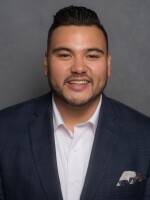As debates over diversity, equity and inclusion programs at the nation's colleges and universities continue and companies pull back from DEI programs, Ohio is becoming more diverse and Ohioans are more likely to say they come from mixed-race family backgrounds, U.S. Census figures show.
Census counts show a significant and growing number of people — in the U.S. and Ohio — identifying as multiracial, a category that increased significantly between 2010 and 2020.
The number of Ohioans who selected “two or more races” on Census forms grew from 237,765 in 2010 to 681,372 in 2020 — an increase of 186.57%.
Almost 7% of Ohioans said they were of two or more races, according to 1-year American Community Survey estimates released in 2023. Nationally, multiracial populations increased even more, by 276%, from about 9 million people in 2010 to 33.8 million people in 2020.
There could be several reasons driving the increase in the multiracial population in the state, including an increase in interracial marriages or an influx of more racially and ethnically diverse people moving to Ohio, said Mark Salling, a demographer at Cleveland State University.
But “the bulk of it,” Salling said, is that people are becoming more compelled to attach themselves to their ethnicities because of a growing appreciation for diversity.
“I think as a whole, Americans have come to realize that our racial and our cultural heritage is diverse in this country, and that’s not a bad thing. In fact, it’s a strength,” Salling said. “I think the overall trend of the last two decades points to people taking pride in diversity and valuing diversity.“
The white alone not Hispanic population remains the largest racial group in the country, although it decreased by 5.9% from 2010 to 2020, according to Census counts. In Ohio, the white alone, not Hispanic or Latino population decreased by 4.3% over the same period.
Although Ohio is less diverse than the nation as a whole, scoring a 40.4% on a Census diversity index in 2020 compared to the nation's score of 61.1%, the state is becoming more diverse. In 2010, Ohio scored a 32.6%.
A diversity index measures the chance two randomly chosen people will be from different racial groups. A score of 0 means everyone is from the same group.
Previously, the numbers of mixed-race people, especially people who come from mixed minority and white families, were distorted in Census counts and population projections because they were often counted as non-white, according to a paper published in the Proceedings of the National Academies of the Sciences in November.
The Census said the large increases are, at least partially, attributable to improvements in how it collects race and ethnicity data.
In 2010, for the first time, respondents could select more than one race when filling out the Census. People could choose up to six options: white, Black or African American, American Indian and Alaska Native, Asian, Native Hawaiian and Other Pacific Islander or Other. Those were options after selecting “yes or no” to Hispanic or Latino, which the Census tracks separately as an ethnicity.
In 2020, the Census also allowed respondents to be more specific about their backgrounds. For example, people could write in their specific origin when they checked the box for white, Black or Some Other Race categories.
“The Census Bureau was trying to reflect what America asked for and I think what America asked for, ‘We want to know more about diversity, and it’s not just one flavor,” Salling said.
As a result of the changes, the Census said its 2020 results paint a more accurate portrait of the country's racial and ethnic makeup.
The improved data collection is also helping flesh out an understanding of multiracial people, whose lives differ from those from racial groups who are not mixed.
"The members of this group generally have distinctive social characteristics: socioeconomic advantages compared to minorities and social integration into milieus with many Whites, as revealed by relatively high rates of marriage to them. However, their identities often encompass their minority heritage," according to the November paper.
Multiracial people are more likely to be young, according to Census data.
Nationwide, nearly one-third of people of two or more races were younger than 18, compared to less than one-fifth of people who said they were white alone, according to Census figures. The multiracial population had the youngest median age — 29.5 — of all race groups.



